If you’ve spent any time around gardeners, you’ve heard terms like “frost tolerant” or “warm weather crops.” This is the idiosyncratic and vague, but purposeful, language of experienced gardeners.
This post seeks to demystify those terms and also teach you which specific plants fall into which category.
What we’ve found in our subarctic gardening experience is that depth of knowledge about this subject has become one of the most important things we have learned.
The four major categories that we will discuss are cold hardy, frost tolerant, frost sensitive and warm loving plants. The subject of plant tolerance is one of the most vital things you can understand to make you a better cold climate gardener!
Why Are Some Plants More Frost Tolerant Than Others?
This is a really good question to start with! Why are there differences in temperature tolerance between plants?
Frost occurs when outdoor temperatures hover around the freezing point, or 32F/0C. It occurs when moisture (water) on the plants, in the ambient air or within the plant itself, freezes.
Frost, or freezing, can cause cellular damage to plants that don’t have sufficient protections from it. Frost can occur above actual freezing temperatures.
The generally accepted reason for some plants being more frost tolerant than others is due to having higher levels of sugars built up in their leaves. Sugar water will freeze at a lower temperature, when compared to plain water. These higher levels of sugar allow certain plants to avoid freezing and thus, they also avoid cellular damage caused by freezing.
There are two types of cold hardiness that are recognized by most gardeners. These two levels essentially describe the level of cold tolerance that the plants have.
Similarly, some plants won’t tolerate frost at all. For these, there are also two levels of tolerance. These two levels again reflect the general tolerance towards cooler temperatures of those plants.
Why Is Plant Temperature Tolerance Important To Know?
As we mentioned above, we have come to the point where we think this topic is one of the most vital to the subarctic gardener.
When you garden in warmer zones, your knowledge of what temperatures a plant can tolerate isn’t often tested.
When growing in the subarctic, you have a very short season bookended by “spring” and “fall” that are measured in weeks, not months.
- Understanding temperature tolerance helps you better understand what gardening techniques might be best for certain types of plants.
- Knowledge of the subject can help inform a phased hardening off process that can accommodate a larger garden and smaller indoor grow room.
- When your indoor seed garden is overflowing, it can tell you what plants can safely be outside and which ones can not.
- Knowledge of plant tolerance helps the gardener develop a strategy for planting a fairly large garden over several weeks.
- Knowing plant tolerance allows the gardener to strategically harvest your garden. What’s important to harvest first? What can you wait on?
- With understanding of what your plants can tolerate, the northern gardener can achieve maximum benefit of free outdoor growing energy, directly saving money on indoor plant lighting when possible.
We heavily use our knowledge of this topic every single year. Every garden we grow and harvest is deeply rooted in these concepts.
As an example, here’s a video we put together on our general harvest strategy. This heavily incorporates ideas we present in this post:
What Are Cold Hardy Garden Plants?
Cold hardy plants are the most capable of them all when it comes to cold tolerance. A mature, cold hardy plant can withstand actual freezing temperatures (32F/0C) for a period of time and even temperatures below freezing.
Cold hardy plants can easily handle light to moderate frosts without being harmed. Another way of saying this is these plants can tolerate a hard frost.
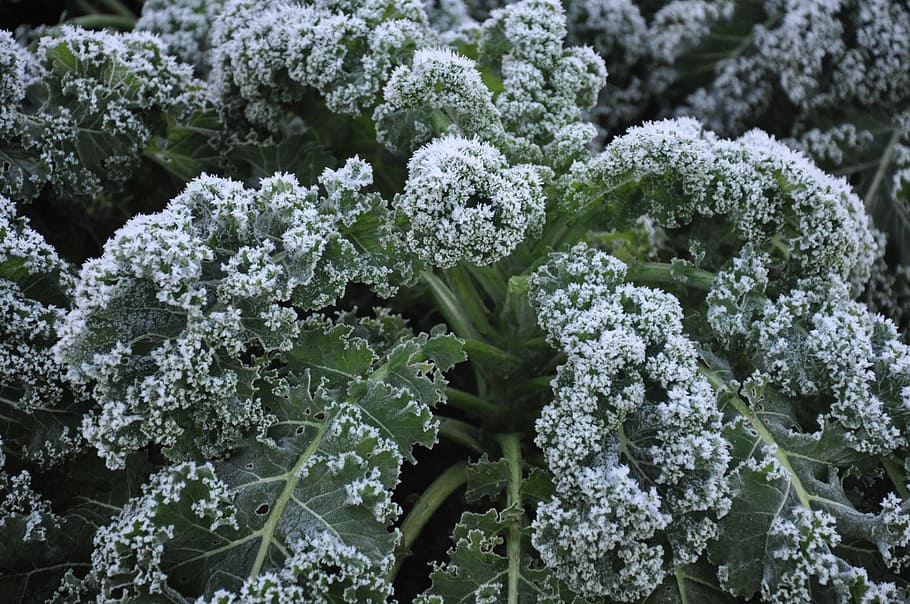
Key Notes About Cold Hardy Plants
These are the generally important things you need to know about cold hardy plants.
- The overwhelming majority of commonly grown garden plants are cold hardy!
- Spring minimum temperature: 36F (preferably higher)
- Fall minimum temperature: Sub-freezing, 25F (hard frost)
- Can often transplant into the garden about 2 weeks prior to last frost
- Cold hardy root vegetables can usually be sown about 2 weeks prior to last frost
- Can often harvest 2 to 4 weeks after first frost
- Will typically germinate in cooler soils (e.g. garage or windowsill)
- Good candidates for winter sowing techniques
- Some are good candidates for late season planting and fall harvests
- Leaf lettuce, spinach, mustards, etc. (Typically <60 days to harvest)
- We typically harden off cold hardy plants 4 to 6 weeks prior to last frost
We did suggest a minimum spring temperature of 36 degrees Fahrenheit. Cold hardy plants are remarkably resilient and can handle temperatures even a bit lower than this. We discuss this more in depth here.
Carrots will actually improve in flavor if you allow them to withstand some levels of frost. It’s always a good idea to harvest these late in the season after you’ve seen a few frosts or you are in the final stages of your garden clean up.
A List Of Common Cold Hardy Vegetables
- Arugula
- Asparagus
- Beets
- Broccoli
- Brussels Sprouts
- Cabbage
- Carrots
- Collards
- Endive
- Garlic
- Kale
- Kohlrabi
- Leeks
- Lettuce (most varieties)
- Mustard Greens
- Onions (Seeds, sets, bunching)
- Parsnips
- Potatoes
- Rhubarb
- Rutabaga
- Spinach
- Turnips
What Are Frost Tolerant Plants?
The next level of cold hardiness is simply frost tolerance. These plants are a little bit more sensitive than truly cold hardy plants. There is enough of a cold tolerance difference to classify them just a little differently in our book.
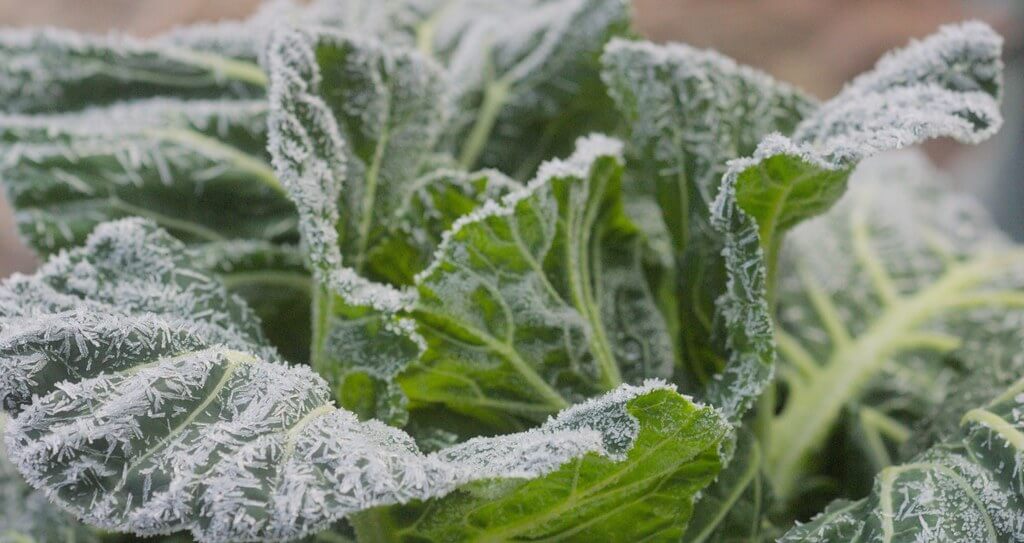
Frost tolerant plants are those that will, as described, tolerate fairly light frosts. The biggest difference between these plants and cold hardy varieties is that these don’t tolerate freezing temperatures quite as well. Some varieties can withstand short periods of freezing temperatures without trouble.
Key Notes About Frost Tolerant Plants
These are the generally important things you need to know about cold hardy plants.
- Spring minimum temperature: 36F (preferably higher)
- Fall minimum temperature: 32F (light frost)
- Can often transplant into the garden about 2 weeks prior to last frost
- Frost tolerant root vegetables can usually be sown about 2 weeks prior to last frost
- Can often harvest 2 weeks+ after first frost (prior to hard frost)
- Will typically germinate in cooler soils (e.g. garage or windowsill)
- Good candidates for winter sowing techniques
- Some are good candidates for late season planting and fall harvests
- Bok choy, radish, Chinese cabbage (typically <60 days to harvest)
- We typically harden off frost tolerant plants 4 to 6 weeks prior to last frost
Artichokes do surprisingly well within the Interior of Alaska. Artichokes are typically difficult to grow, but our northern climate supports them well. Our cool temperatures lend well to the plant’s requirement to spend a couple of weeks below 50 degrees for a good fruit set. Artichokes in sub-irrigated containers have performed quite well for us in interior Alaska.
A List Of Common Frost Tolerant Vegetables
- Artichoke
- Bok Choy
- Cauliflower
- Celeriac
- Celery
- Chard
- Chinese Cabbage
- Peas
- Radish
- Radicchio
What Are Frost Sensitive Plants?
There is a frost tolerance level that sits between frost tolerant and warm loving. These are best described as frost sensitive plants.
These varieties feature very little frost tolerance and could be expected to be severely injured or can die once frost hits them.
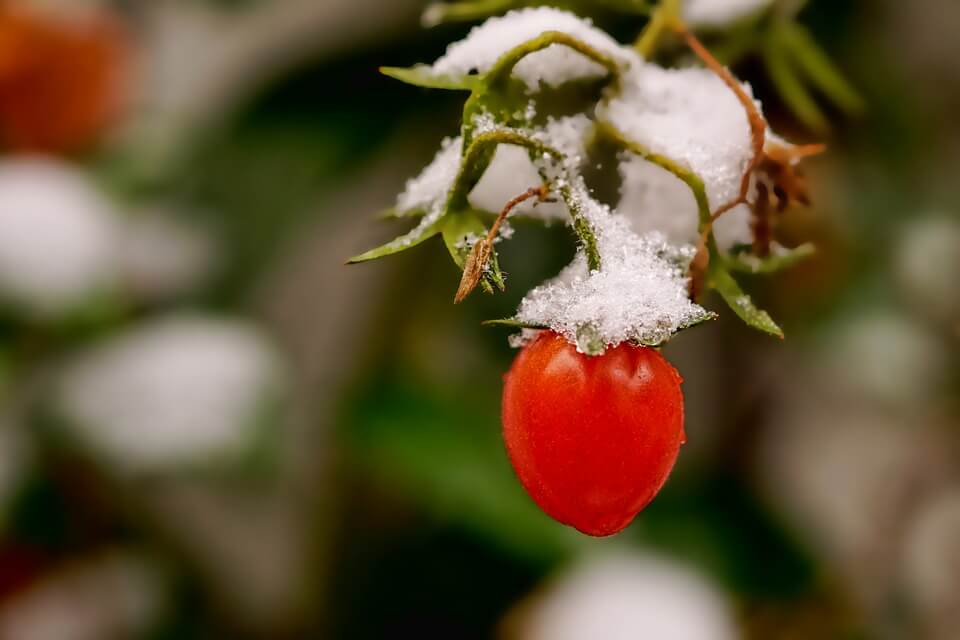
These plants do often tolerate somewhat cool temperatures, at least down to the low 40’s where frost is unlikely to occur.
Key Notes About Frost Sensitive Plants
These are the generally important things you need to know about cold hardy plants.
- Spring minimum temperature: 40F (preferably higher)
- Fall minimum temperature: 36F (zero frost tolerance)
- Suggest transplanting into the garden no earlier than last frost
- Should generally harvest prior to first frost for best results & produce
- Will typically germinate in warmer soils (e.g. heat mat or indoors)
- Typically not good candidates for winter sowing techniques
- We suggest frequent weather/temperature checks when these plants are outside during the shoulder seasons (spring & fall)
- Frost sensitive plants will respond well to soil warming and ambient air warming techniques, like raised beds and greenhouses/tunnels.
- We typically harden off frost sensitive plants 2 to 3 weeks prior to last frost. About 4 weeks prior to last frost when placing into a temperature controlled greenhouse.
We are particularly sensitive to looking at our 10-day weather outlook around last frost for any unseasonable temperature dips. This entirely informs our decision on whether to actually plant frost sensitive plants.
These plants are strong candidates to be placed or planted in a greenhouse or hoophouse, if you have one. They will appreciate the extra warmth in most cases.
Frost sensitive plants will often significantly slow (or cease) growth when temperatures get into the mid-40’s or so. While they can often tolerate even colder temperatures, the benefits to continued growth in colder weather is generally minimal.
A List Of Common Frost Sensitive Vegetables
- Snap Pea
- Sweet Corn
- Tomatoes
- Beans
- Most herbs (Parsley is frost tolerant)
- With few exceptions, most flowers are frost sensitive. Exceptions include perennial flowers that are naturally cold hardy.
What Are Warm Loving Plants?
Some varieties of vegetables simply prefer warmer temperatures. We sometimes refer to these as “warm climate crops” as well.
Warm loving plants are usually sensitive to temperatures below about 50 degrees. Temperatures below this can injure the plant, severely reduce growth rates or sometimes even harm productivity.
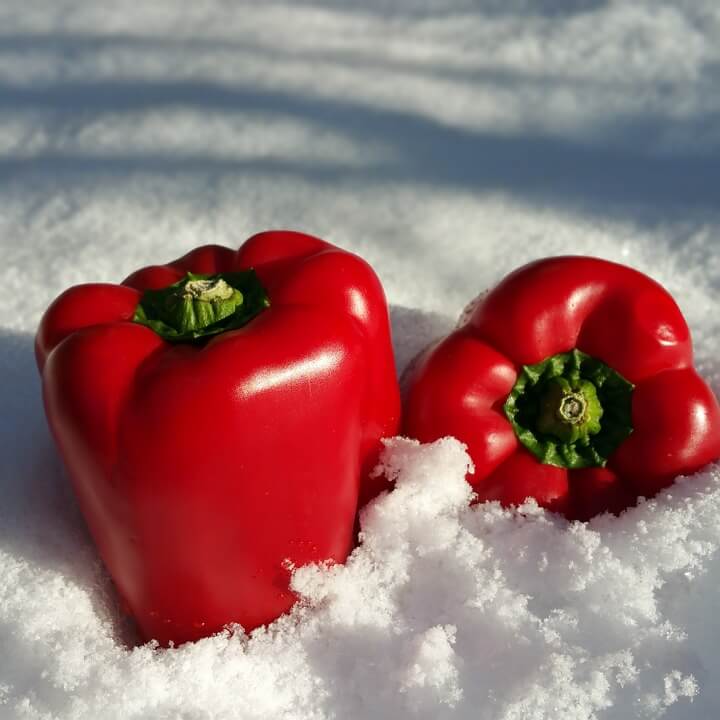
Warm loving plants must be treated with the utmost care in the subarctic. Our early and late season weather conditions can be particularly ill-suited to these plants!
Key Notes About Frost Sensitive Plants
These are the generally important things you need to know about cold hardy plants.
- Spring minimum temperature: 50F (preferably higher)
- Fall minimum temperature: 40F (zero frost tolerance)
- Suggest transplanting into the garden no earlier than last frost. Can transplant into temperature controlled greenhouses about 2 weeks prior to last frost.
- Should generally harvest prior to first frost for best results & produce
- Will typically germinate in warmer soils (e.g. heat mat or indoors)
- Typically not good candidates for winter sowing techniques
- We suggest frequent weather/temperature checks when these plants are outside during the shoulder seasons (spring & fall)
- Warm loving plants will respond well to soil warming and ambient air warming techniques, like raised beds and greenhouses/tunnels.
- We typically harden off frost sensitive plants 2 to 3 weeks prior to last frost. About 4 weeks prior to last frost when placing into a temperature controlled greenhouse.
We are never in a hurry to harden off our warm loving plants! They are the plants we take the most care of when frost dangers are still present.
When we are in the process of hardening off these plants, we try to aim for days in the mid-50’s and above. We don’t leave them outside at night unless the temperatures are expected to remain above 50 degrees.
Seriously, don’t mess around with these plants. We’re telling you, cold temperatures can permanently damage them!
Warm loving vegetables will often perform at their best when brought into a greenhouse. When they are warm, they will grow as fast as they can and mature their fruit and vegetables more quickly. Additionally, anything you can do to keep the soil warm for these plants will be rewarded in better production.
Squash are often recognized as warm loving plants. That’s true, and they will do better when they have great warmth. Some varieties are more temperature sensitive, whereas others could be classified as frost tolerant. All squash will produce better when offered warmth.
A List Of Common Warm Loving Vegetables
- Cucumbers
- Eggplants
- Peppers
- Okra
- Pumpkins
- Summer Squash
- Winter Squash
- Sweet Potato
- All Melons (Marginal subarctic crop)
Final Notes On Hardiness & Frost Tolerance
One thing that is important is that hardiness against the cold can vary due to a number of complex factors that go into this.
The most relevant aspect to cold tolerance is often the exact variety, or cultivar, that you are growing.
You might find one type of lettuce that can barely withstand a frost and others that will tolerate a hard frost. These are nuances you just have to learn.
Additionally, crops with curled/wavy/textured leaves will usually feature more frost tolerance than those with smooth or flat leaves. This partially relates to the ability for frost to penetrate the plant, but also the curls will create very small micro climates that help the plant survive colder temperatures better.
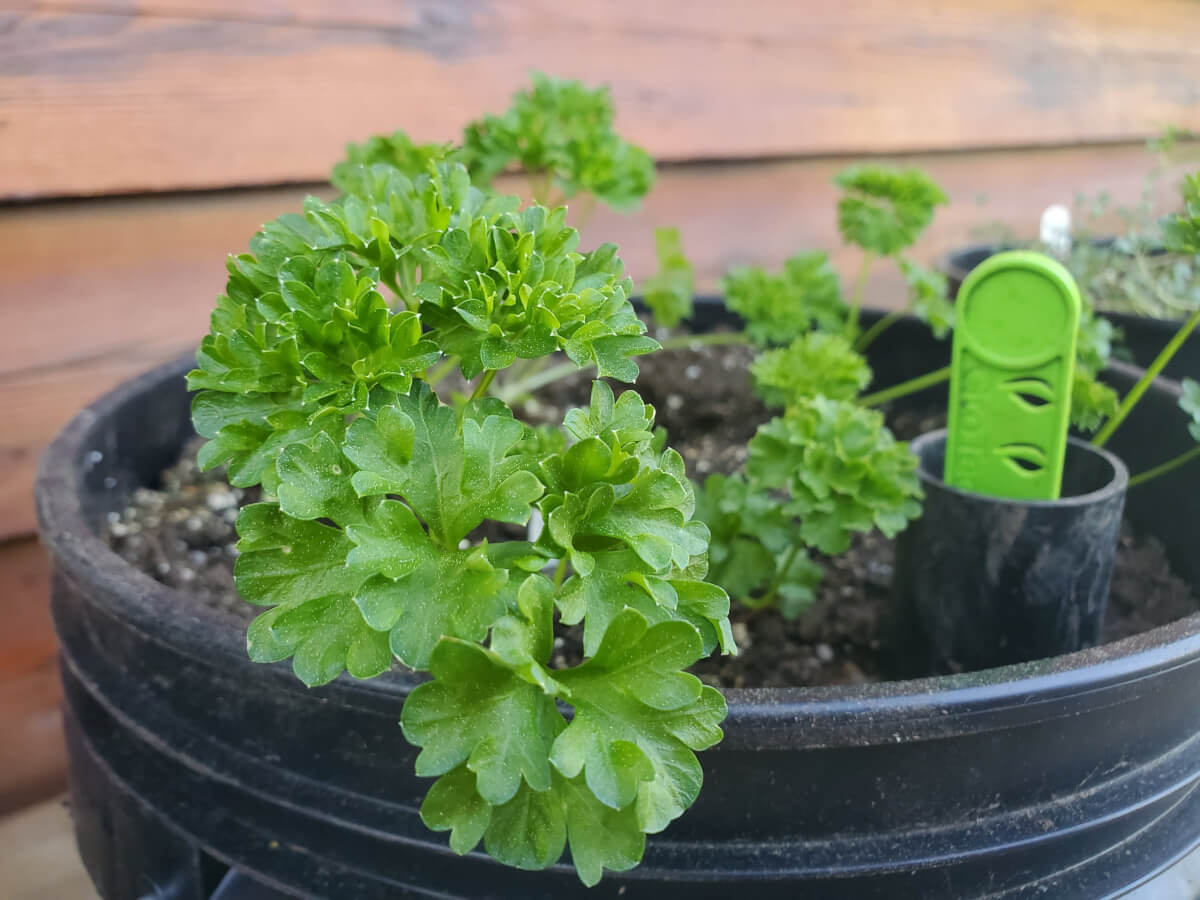
Curly leaf structures, such as you see on this curly leaf parsley, can often be an indicator of strong cold climate tolerance.
In closing, we’ll remind you that young plants don’t have nearly as much frost tolerance as their full grown varieties. It’s always important to keep an eye on the weather in the shoulder seasons! Don’t push things too fast.
We know that it’s exciting when the weather starts to warm up! If you’re a new gardener, play it safe and just plant everything around or after the last frost date.
That’s All We Wrote!

Having a good time? We have an ever growing list of insightful and helpful subarctic & cold climate gardening articles, waiting out there for you!
- Cold Climate Gardening Basics 👉
- Growing Your Garden From Seed Indoors 👉
- Advanced Cold Climate Gardening Techniques 👉
- Plant Specific Cold Climate Growing Guides 👉
- Subarctic Perennial Food Forests & Foraging 👉
- Indoor Garden Lighting & Grow Rooms 👉
- Greenhouses & Temperature Control 👉
- Harvesting & Food Preservation 👉
- Solving Cold Climate Garden Problems 👉
- 1 Minute Reads On Tons Of Garden Topics 👉
FrostyGarden.com is 100% ad-free and we do not use affiliate links! This resource is voluntarily supported by our readers. (Like YOU!) If we provided you value, would you consider supporting us?

I just purchased a dozen Mangave pups. Most had a cold tolerance listed at 10 degrees F and a few were 20. Since we sometimes get low temps in winter, I felt safe ordering these. Then, after I got them, I read detailed information that says that they are not frost tolerant. How can that be? They can only tolerate 10 degrees if there is no moisture in the air? Now I’ll have quite a few additional pots I may have to bring inside for the winter which is very frustrating.
This is surprisingly common among many genus of plants. There can be differences in cold tolerance based entirely on the exact cultivar (or specific variety of a plant) you received. Some types of mangaves are hardy to zone 4, whereas others require much warmer zones. If you purchased from a reliable seller and they stated they were relatively cold tolerant, you are likely safe! If you know the exact cultivar you received, it will be important to narrow your research to that type (e.g. Blue Mammoth) as opposed to the genus (e.g. mangave) as a whole.
If you just don’t know what you have, I would probably suggest hedging your bets. Put some in the ground and some in pots that can be overwintered. If yours survive the winter, you can likely put them all out next year! Good luck and thanks for the comment!
I see you have okra & sweet potatoes on your warm veggie list? How do you grow okra & sweet potatoes grow in subartic Alaska? Would they be marginal like melons & watermelon you mentioned they are? I assume okra & sweet potatoes would be marginal as well? I know in the northern states okra grows slower, skinnier, shorter & like 3-4 pods harvested from each plant a day. Sweet potatoes, the 80-90 day types, than the longer season types & they grow small too.
Exactly, I’ll try to clarify further. We’ve tried Okra. It can be grown in the subarctic. The reality is, you get less than a handful per plant and it’s not worth it. We talk about it because some say it can’t be done, but it can technically be done. I suspect if I put my mind to it, I could get baby sweet potatoes, too. In the end, I think different regions have their advantages and disadvantages. The theme I pursue is to play to my strengths. We can grow some great cool weather crops here. It’s fun to explore the limits, but the bulk of our gardens generally play towards cool climate success.